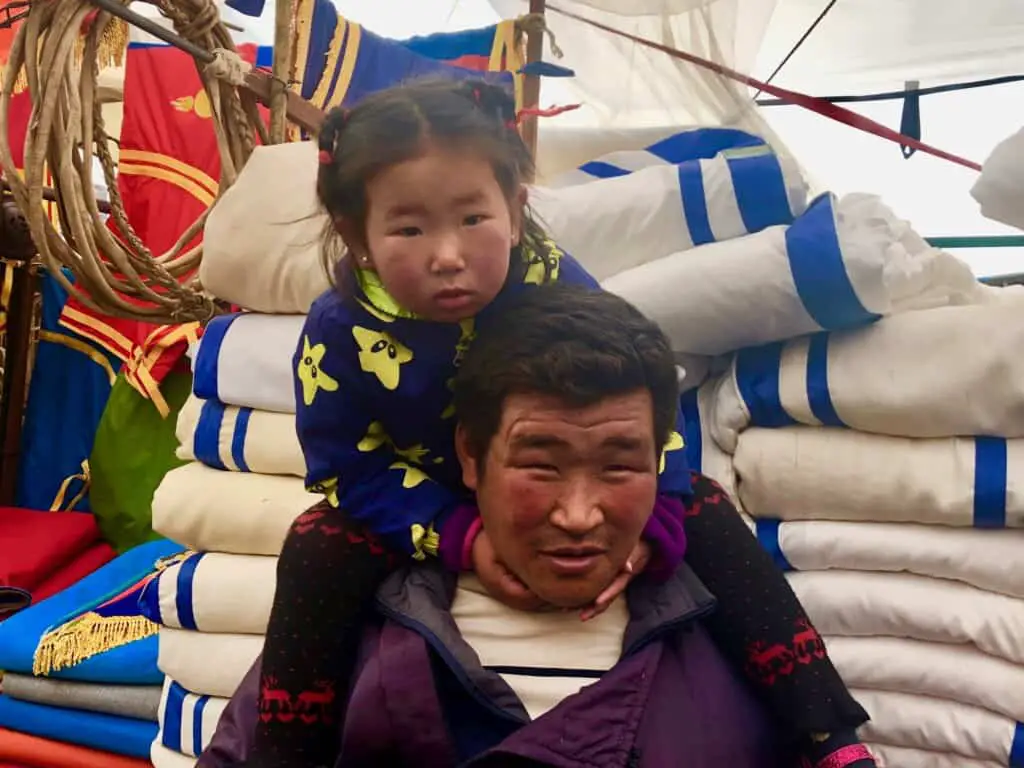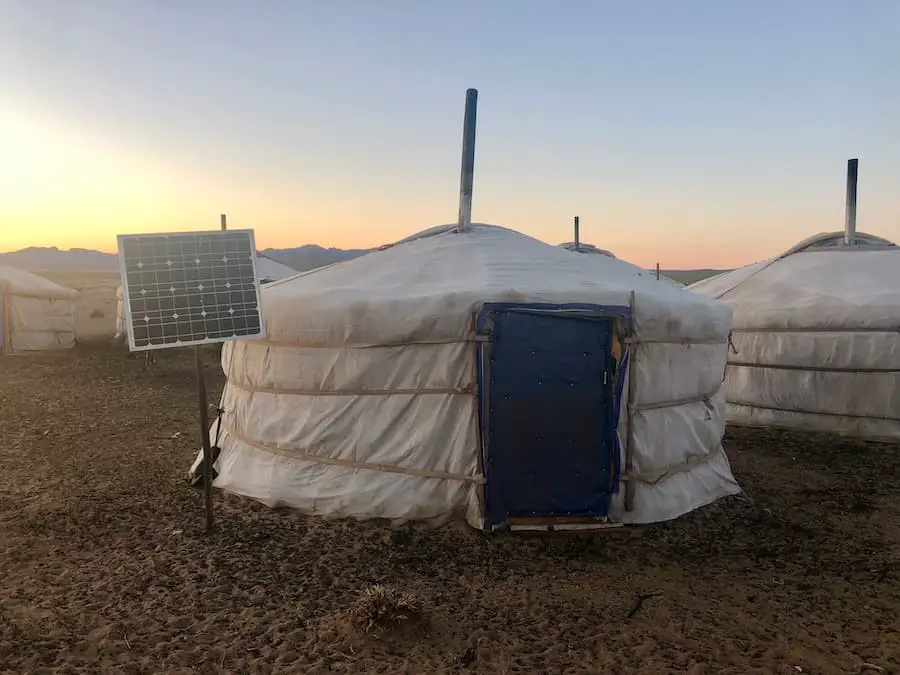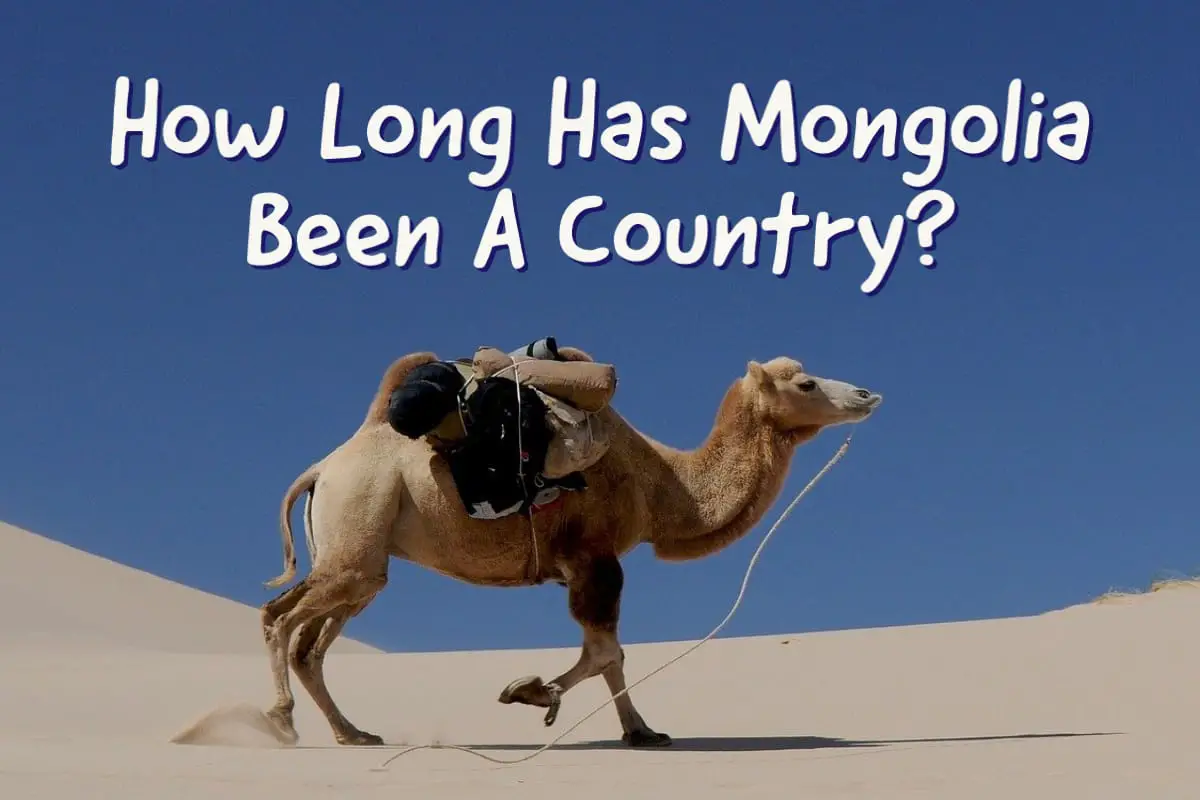With its diverse landscapes, culture, and customs steeped in ancient heritage, Mongolia is an incredible destination to explore. Despite having a long history as part of various empires, this Central Asian country has only been independent for a relatively short time – making it all the more intriguing!
In 1911 Mongolia broke from Chinese rule; in 1921, the socialist People’s Republic of Mongolia was formed. The Peoples’s Republic of Mongolia was a satellite state of the Soviet Union. When the Soviet Union broke apart in 1989, Mongolia’s fate again changed. In 1990, Mongolia, an independent and democratic country, was formed; its official name is Mongol Uls.
Table of Contents
- Mongolia Becomes A Country In The Early 1900s
- Mongolia’s People’s Republic is Formed
- Fall of the Soviet Union and Mongolia Becomes An Independent Nation in 1990
- Genghis Khan and Mongolia Today
- Related Questions

Mongolia Becomes A Country In The Early 1900s
After the collapse of the Ching dynasty in 1911, Mongolia, under Bodg Khaan, declared independence. During this time, the newly formed Republic of China considered Mongolia part of its territory. Yuan Shikai, the then-president of the Republic of China, considered the Mongolian territory also part of the Qing Dynasty’s territory.
Bodg Khaan said that Mongolia was never part of the territory of China. He said that the Manchus ruled both Mongolia and China under the Qing dynasty. Therefore, once the Manchus lost power, Mongolia was separated and was no longer part of Chinese territory.
To learn more about the difference between Manchu, Mongol, and Han Chinese, you can read our blog What Is The Difference Between Manchu, Mongols, And Han Chinese People? by clicking here.
Bodg Khaan controlled an area of Mongolia approximately the size of former Outer Mongolia during the Qing dynasty. In 1919 Russia had the October revolution, which was led by Josef Lenin. Also near this time, the White Russian Lieutenant-General Baron Ungern led his troops into Mongolia in October 1920.
General Baron defeated some Chinese forces coming to Mongolia in early February 1921. Mongolia, sandwiched between Russia and China, decided to join the Russians. To eliminate the Chinese threat, Bolshevik Russia decided it was better to support a communist Mongolian government and army than to fight or worry about Mongolia.
Mongolia’s People’s Republic is Formed
From 1921 until 1989, Mongolia was a one-party state with close ties to the Soviet Union. Mongolia receives technical, economic, and military assistance from the Soviet Union. They followed Soviet guidance, politics, and economics and built a socialist society.
Stalin and the Soviet Union were interested in Mongolia because of its strategic position, which acted as a buffer between Russia and China. Mongolia is situated with Russia to the north and China to the south, making the perfect buffer between Russia and China.
When the Soviet Union fell at the end of 1989, so did the one-party system in Mongolia that had close ties to the Soviet Union. During this period of time, forces of change happened in Mongolia and the monopoly of power that the communist had disappeared.

Fall of the Soviet Union and Mongolia Becomes An Independent Nation in 1990
In 1990 with the fall of the Soviet Union, the one-party system of communists fell and gave way to free multi-party elections. These free multi-party elections also included a coalition government, a new culture, a new constitution, greater religious freedom, and more emphasis on Mongol national traditions.
The new Mongolian government also took a neutral position in international relations and transitioned its economy to a market economy. All of this has taken place since 1990.
As the Soviet Union influenced Mongolia for so many years, there are still many communist influences that you can see in Mongolia today. Many of the older Mongolians will tell you that they went to college and studied some Russian. There are also some old Soviet-style buildings. When I traveled to Mongolia, I saw a lot of imported Russian foods.
Today, both Mongolia and Russia are considered to be critical trading partners. They see themselves as friends and not foes. That is why today the official name of Mongolia today is Mongol Uls.
To discover more about Mongolia, you can read our blog Mongolia Vs Inner Mongolia: What Is The Difference? by clicking here.
Genghis Khan and Mongolia Today
Genghis Khan is now seen as a national hero in Mongolia; the Mongolians consider him their founding father. During Soviet rule, even mentioning the name Genghis Khan was banned.
The Soviets hoped to stamp out all traces of Mongolian nationalism. They felt one of the best ways to do this was to remove the memory of Genghis Khan and Mongolian nationalism and history from all the history books. People were forbidden to make a pilgrimage to his birthplace in Khentii.
Genghis Khan’s memory has benefited from the change of government in Mongolia. Today he is considered one of the most revered national heroes. The nation’s main airport is named in his name. His portrait appears on Mongolian currency, and the Mongolians have created a huge memorial called the Genghis Khan Statue Complex to him outside Ulaanbaatar.
To discover more about Genghis Khan and the Genghis Khan Statue Complex, you can read our blog Mongolia’s Genghis Khan Statue: Mongolia’s Love for Genghis Khan by clicking here.
Mongolia’s independence is relatively new; it has only been independent since 1990. The fantastic thing about this is that Mongolia is a vibrant, modern, and exciting place, so it does not feel like a country that gained its complete independence in 1990.
Related Questions
What Are Some Lessons On Community Support from The Mongolian Nomadic Herders?
The Mongolian nomadic herders in the Gobi Desert taught me six important lessons about our community support importance. I learned some important lessons about working together as a group and supporting our neighbors while also building a support team that will always be there for us – especially in our time of need. For this to happen, we must each be willing to serve in our communities and work together.
You can discover more by reading our blog 6 Lessons On Community Support from The Mongolian Nomadic Herders by clicking here.
Who Are the Gobi Desert Mongolian Herders Who Use Dirt Bikes?
The Mongolian nomadic family we stayed with had dirt bikes to round up their herds; the husband and wife were University graduates. They choose to live the life of a nomadic herder. They also believed in using as much modern technology as possible, as they had everything from cell phones to computers and television that got decent reception. They had solar panels around the yurt (ger) campsite to charge and use all these electrical appliances.
You can learn more by reading our blog Gobi Desert Mongolian Nomads and their Dirt Bikes by clicking here.

